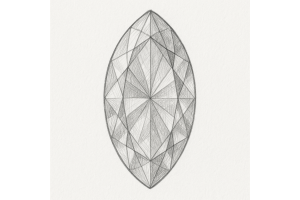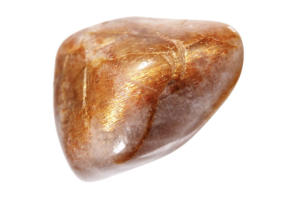GBP
/
GBP
/
Shipping to:
Currency:
Sapphire vs Spinel: What’s the Real Difference Between These Gemstones?
When selecting gemstones, it's essential to understand the nuances between similar-looking stones.
Sapphire and spinel are two such gems that, while they may appear alike at first glance, possess distinct characteristics.
This article delves into the differences between sapphire and spinel, guiding you towards an informed decision for your jewellery selections.
Sapphire and Spinel: A Brief Overview
Sapphires have long been cherished for their deep blue hues and remarkable durability.
Composed of corundum (aluminium oxide), sapphires rank 9 on the Mohs hardness scale, making them second only to diamonds in hardness.
This exceptional hardness ensures their suitability for everyday wear, particularly in engagement rings and heirloom pieces.
Spinel, on the other hand, is a gemstone that has often been mistaken for sapphire due to its similar appearance.
Composed of magnesium aluminium oxide, spinel exhibits a range of colours, including reds, pinks, blues, and purples.
It has a hardness of 7.5 to 8 on the Mohs scale, indicating good durability, though it is slightly softer than sapphire.
If you’re drawn to vibrant, colourful designs, check out gemstone engagement rings that showcase both traditional and non-traditional stones.
Colour Variations and Appeal
While blue is the most recognised colour for sapphires, they are available in a spectrum of colours such as yellow, pink, green, and the rare padparadscha—a delicate blend of pink and orange.
This variety allows for versatile design options in jewellery.
Spinels also boast an impressive array of colours, from vibrant reds and hot pinks to striking blues and purples.
Notably, spinels are often untreated, meaning their colours are natural, which is a significant draw for collectors and enthusiasts seeking authenticity in their gemstones.
Durability and Hardness
Durability is a crucial factor when selecting a gemstone for jewellery intended for regular wear.
Sapphires, with their Mohs hardness of 9, offer excellent resistance to scratches and are highly durable.
Spinels, while slightly softer with a hardness ranging from 7.5 to 8, still provide good durability suitable for various types of jewellery.
However, they may require a bit more care to maintain their polish over time.
For something truly special and different, check out non-traditional engagement rings featuring unique gemstones and designs.
Treatment and Enhancement
It's common practice for sapphires to undergo heat treatment to enhance their colour and clarity.
This treatment is widely accepted in the gemstone market, but it's essential for buyers to be aware of any enhancements, as untreated sapphires are rarer and often more valuable.
Spinels are typically found in their natural state without the need for treatments to improve their appearance.
This lack of enhancement adds to their allure, offering buyers a gemstone that is both natural and often unique in its colouring.
If you're comparing natural gems with alternatives, check out this helpful guide on lab-grown diamonds vs gemstones.
Rarity and Value
High-quality spinels are rarer than sapphires, especially those exhibiting vivid red or blue hues.
Despite this rarity, spinels have historically been undervalued compared to sapphires.
However, in recent years, appreciation for spinel has grown, leading to an increase in its market value.
Sapphires have a well-established market presence and are often associated with luxury and prestige.
Their value is influenced by factors such as colour intensity, clarity, size, and whether they have undergone treatment.
Curious where these stunning gems come from? Learn more about how and where gemstones are formed.
Historical Significance
Historically, spinels have been mistaken for rubies and sapphires.
Notable examples include the "Black Prince's Ruby" and the "Timur Ruby," both of which are, in fact, spinels.
This historical confusion adds a layer of intrigue to spinel's story and highlights the importance of modern gemological identification.
Choosing Between Sapphire and Spinel
When deciding between sapphire and spinel for your jewellery, consider the following factors:
- Colour Preference: Both gemstones offer a range of colours, so your choice may depend on the specific hue you desire.
- Durability: For pieces intended for daily wear, sapphire's superior hardness may be advantageous.
- Treatment Awareness: If you prefer a gemstone in its natural state without enhancements, spinel may be more appealing.
- Budget: Spinels can offer a more affordable option without compromising on beauty, especially if you're seeking unique colours.
- Rarity and Uniqueness: If owning a rarer gemstone is important to you, a high-quality spinel could be the perfect choice.
Want to pair your gem with something that complements it beautifully? Have a look at these diamond wedding rings to complete your set.
Frequently Asked Questions
Is spinel more affordable than sapphire?
Generally, spinels have been more affordable than sapphires.
However, as appreciation for spinel grows and high-quality specimens become more sought after, prices are rising.
Sapphires, depending on their quality and origin, can command higher prices, especially for untreated stones with exceptional colour and clarity.
Can spinel be worn daily?
Yes, spinel can be worn daily.
With a hardness of 7.5 to 8 on the Mohs scale, spinel is durable enough for regular wear.
However, it is slightly softer than sapphire, so some care should be taken to avoid scratches and harsh impacts.
Why was spinel mistaken for sapphire in the past?
Spinels and sapphires can appear very similar in colour and clarity.
Before the advent of modern gemology tools, they were often confused because their visual characteristics overlapped.
This led to many historical spinels being labelled as sapphires or rubies in royal collections.
Are synthetic sapphires considered real gems?
Yes, synthetic sapphires are chemically identical to natural ones—they’re just created in a lab.
They offer a more affordable and ethically sourced alternative, though natural sapphires generally hold higher value and rarity.








